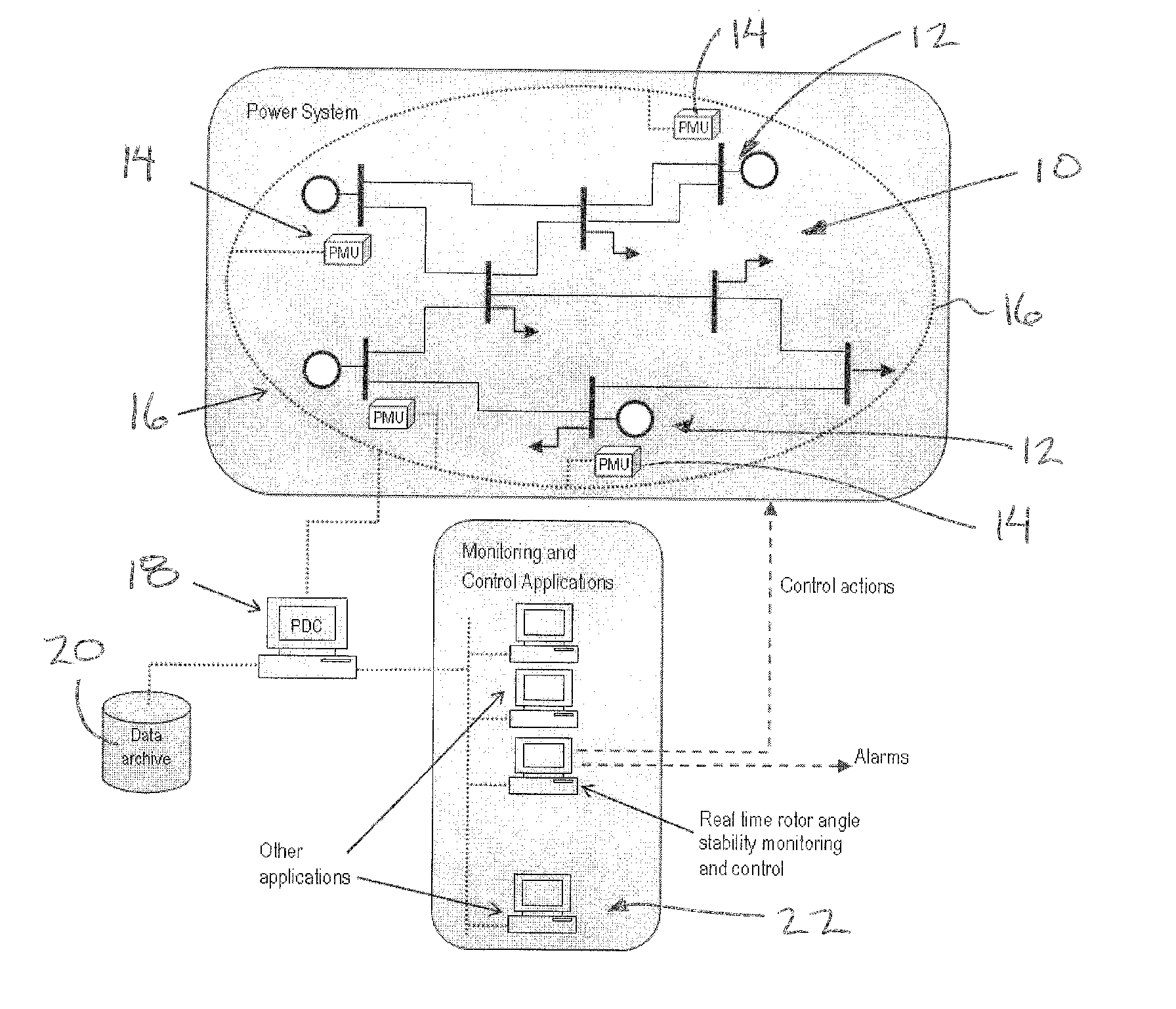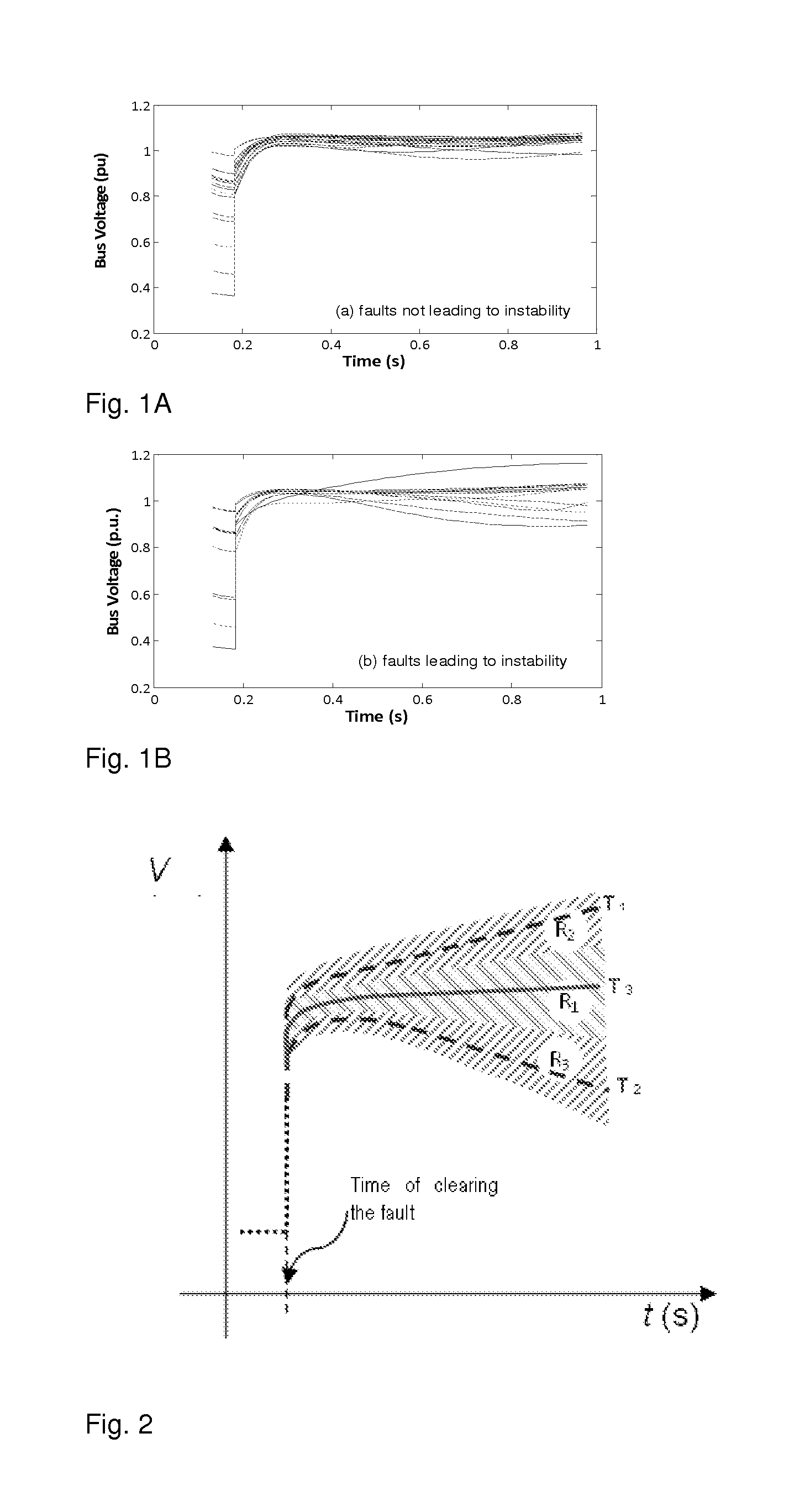Rotor Angle Stability Prediction Using Post Disturbance Voltage Trajectories
a technology of voltage trajectories and rotational angle, which is applied in the direction of dynamo-electric converter control, testing/monitoring control systems, instruments, etc., can solve the problems of rotor angle, frequency or voltage instability, transient instability, and limited effectiveness of local measurement based out-of-step protection systems in minimizing effects
- Summary
- Abstract
- Description
- Claims
- Application Information
AI Technical Summary
Benefits of technology
Problems solved by technology
Method used
Image
Examples
example of application
[0108]In order to demonstrate the concept, a case study is presented using IEEE 39-bus test system (New England test system) shown in FIG. 6 [18]. This system with 10 generators, (one of which is actually an equivalent generator representing a large system) is often used as a test case for rotor angle and small signal stability studies.
Database of Dynamic Simulations
[0109]A large number of contingencies were simulated using TSAT dynamic simulation program [19]. The contingencies included three-phase to ground faults on the busbars and three-phase to ground faults on transmission lines at different locations (25%, 50%, and 75% of the length). It was assumed that all faults were cleared after 5 cycles by removing the respective line or the busbar. These faults were repeated at four different load levels (base load, base load plus 5%, 7% and 10%). This gave a database of 176 simulation cases, of which 120 were stable faults and 56 were unstable faults. From this simulation database, 75...
PUM
 Login to View More
Login to View More Abstract
Description
Claims
Application Information
 Login to View More
Login to View More - R&D
- Intellectual Property
- Life Sciences
- Materials
- Tech Scout
- Unparalleled Data Quality
- Higher Quality Content
- 60% Fewer Hallucinations
Browse by: Latest US Patents, China's latest patents, Technical Efficacy Thesaurus, Application Domain, Technology Topic, Popular Technical Reports.
© 2025 PatSnap. All rights reserved.Legal|Privacy policy|Modern Slavery Act Transparency Statement|Sitemap|About US| Contact US: help@patsnap.com



